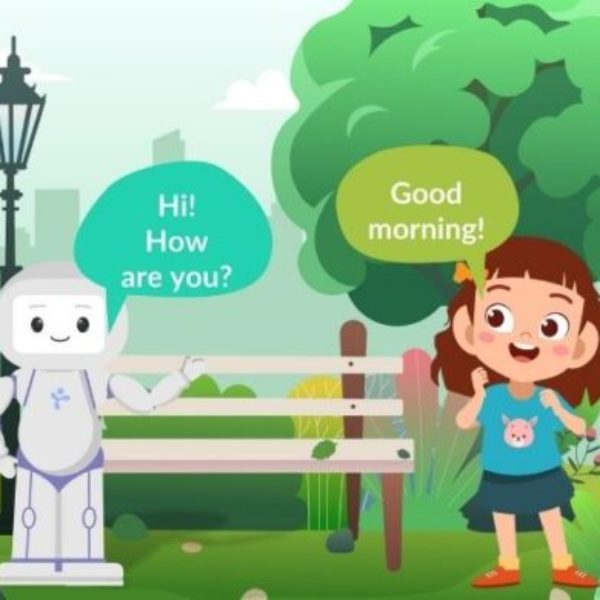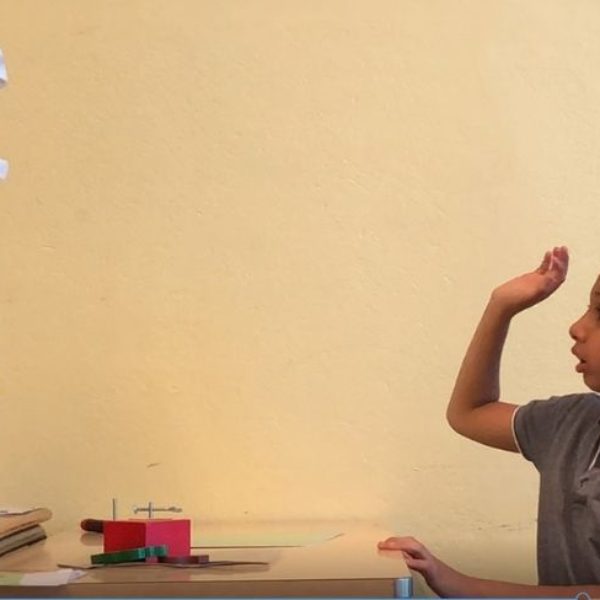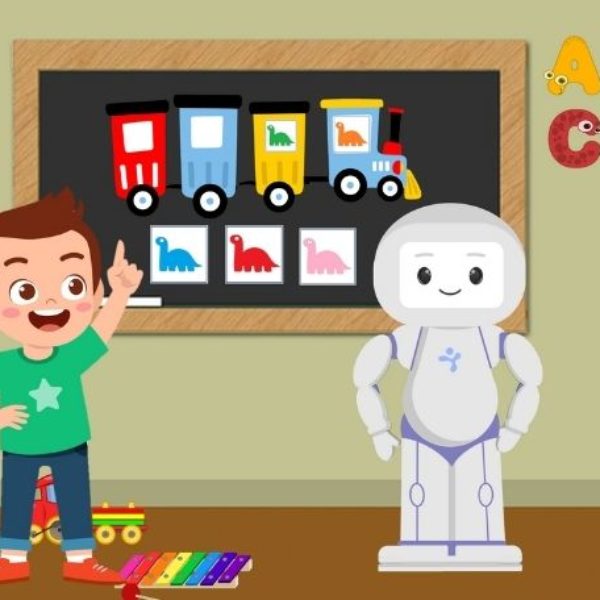Community helpers curriculum is focused on improving the social awareness in children with autism and helping them to be prepared for real-life interaction with community members.
Topics Covered: naming jobs, tools, workplaces, and community cars. Developing social awareness and practicing the interaction with people in the community
Number of Units: 37
Age range: 4-8 years of development
–> Included in the home and school subscription plan!
Community Helpers Curriculum Description:
Using the lessons in the Community Helpers Curriculum, children will learn more about their local community and increase their language skills. The curriculum is designed for children with autism and is suitable for children with developmental or language delays. QTrobot shows the player around their town, and the learner will help QTrobot bring people to work, park all the vehicles at the right building, and will learn some simple word matching with QTrobot.
A child playing these games will learn new vocabulary, develop receptive and expressive language, and learn the situations in which they might need help from one or more community helpers. Across the curriculum’s five levels, children are exposed to a gradually increasing level of language, starting with simple matching and identifying, answering Wh questions. In the later levels, QTrobot helps children to use more advanced skills such as negation, filling in the blanks, riddles, and analogies.
The five levels of the curriculum are arranged as follows:
Level 1 – Receptive Vocabulary for local buildings, workers, and vehicles
Level 2 – Matching workers to their building and vehicle, Introducing Expressive Labelling
Level 3 – Introducing job specific tools, Receptive Wh questions, problem solving, and sorting into categories
Level 4 – Expressive who, what, where questions, story-based teaching, true or false
Level 5 – Negation, Riddles, Analogies, Why/ When questions
Who can benefit from QTrobot community helpers curriculum?
The curriculum is designed for children with autism and therefore has material to reach children on a variety of academic levels. It is accessible to children who have spoken language, who use AAC devices, or to those who are non-verbal or rely on matching tasks to indicate understanding.
The games may also be useful for children who do not have autism but who have other language or developmental delays. The curriculum works as soon as it is installed on the user’s tablet, so is suitable for home or school use.
Identical matching and identifying are a prerequisite for this game. Learners who struggle with these skills are advised to first master at least Level 1 of the Early-Stage Development Curriculum, Receptive, and Cognitive Language.
Here are some examples of the Community helpers activities:
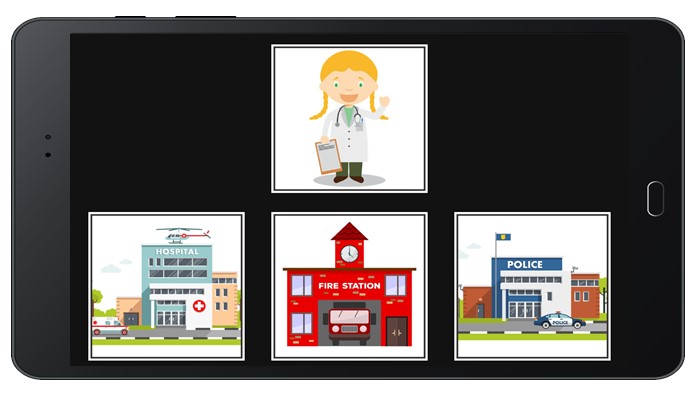
Matching community workers with the work place
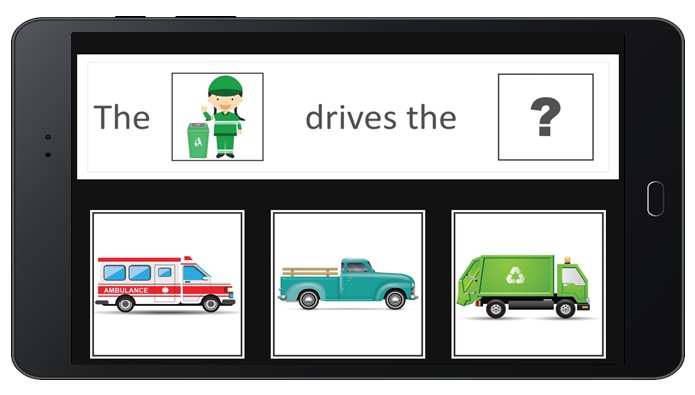
Matching community workers with their vehicles
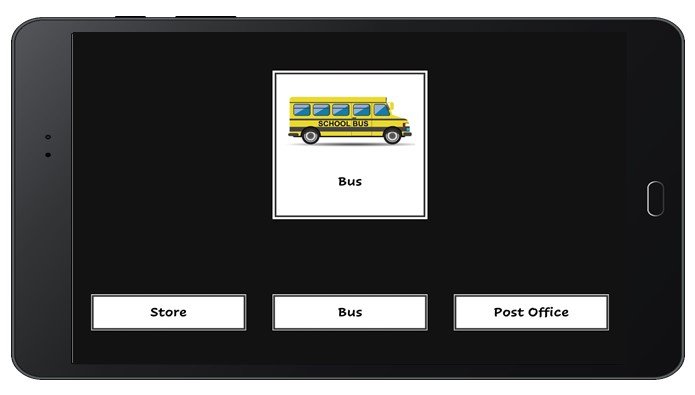
Matching items with their written names
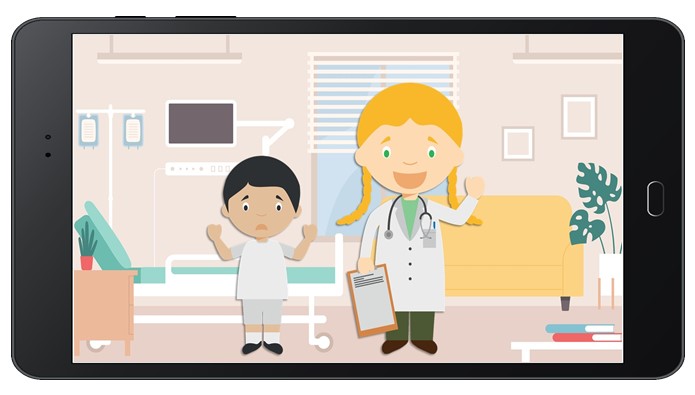
Answering WH questions about jobs and community workers
You can find the lessons covered by QTrobot Community Helpers curriculum For autism and SEN here:
Level 1: Receptive Vocabulary for local buildings, workers, and vehicles
Unit 01 – Matching Community Helpers
Unit 02 – Matching Community Buildings
Unit 03 – Matching Community Vehicles
Unit 04 – Identifying Community Helpers
Unit 05 – Identifying Community Builders
Unit 06 – Identifying Community Vehicles
Unit 07 – Recap Level 1, covering matching, identifying of people, buildings, and vehicles
Level 2: Matching workers to their building and vehicle, Introducing Expressive Labelling
Unit 01 – Identifying Community Workers
Unit 02 – Identifying Community Buildings
Unit 03 – Matching People and vehicles
Unit 04 – Matching People and buildings
Unit 05 – Labeling Community Workers
Unit 06 – Labeling Community Buildings
Unit 07 – Labeling Community Vehicles
Unit 08 – Recap Level 2, covering people, vehicles, and buildings – recap of matching needs to come in here too
Level 3: Introducing job-specific tools, Receptive Wh questions, problem-solving, and sorting into categories
Unit 01 – Matching buildings and vehicles
Unit 02 – Who Questions – Receptive
Unit 03 – Matching people and tools
Unit 04 – Labeling people who work in our town
Unit 05 – Labeling buildings in our town
Unit 06 – labeling vehicles in our town
Unit 07 – Fill in the blank (People)
Unit 08 – Fill-in the blank (Vehicles)
Unit 09 – Fill in the blank (Buildings)
Unit 10 – Where Questions – receptive
Unit 11 – Receptive worker categories
Level 4: Expressive who, what, where questions, story-based teaching, true or false games
Unit 01 – Answering ‘who’ questions – expressive
Unit 02 – Answering ‘where’ questions – expressive
Unit 03 – Answering ‘what’ questions – expressive
Unit 04 – ‘True or False’ Game
Unit 05 – Answer Wh questions based on a story
Unit 06 – Expressive language fill-in (when &why)
Unit 07 – Variety of ‘wh’ questions – QTrobot gives a clue and asks a simple (who, what or where) question.
Level 5: Negation, Riddles, Analogies, Why/ When questions
Unit 01 – Negation, identify the ‘odd one out’
Unit 02 – Answer ‘why’ questions – expressive
Unit 03 – Label items from a scene
Unit 04 – Riddle solving, based on a clue
Unit 05 – Analogy-based problem solving
Unit 06 – Matching word to image

